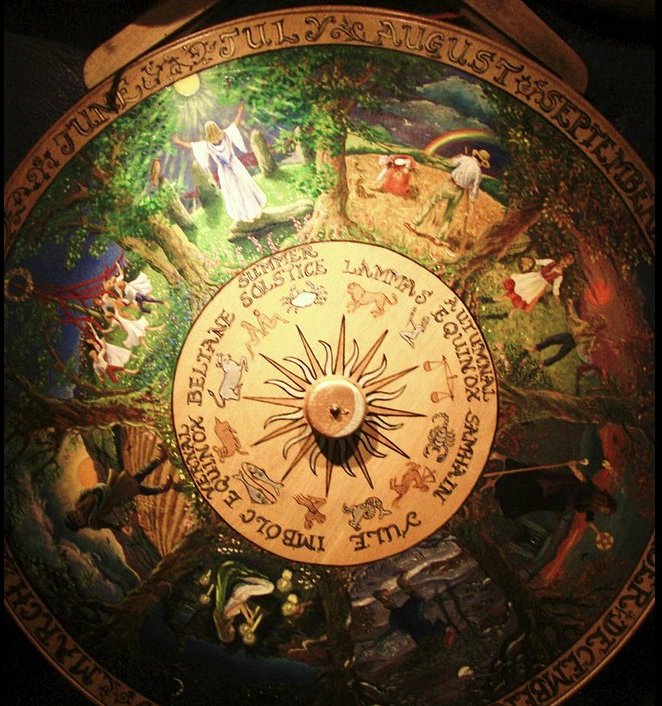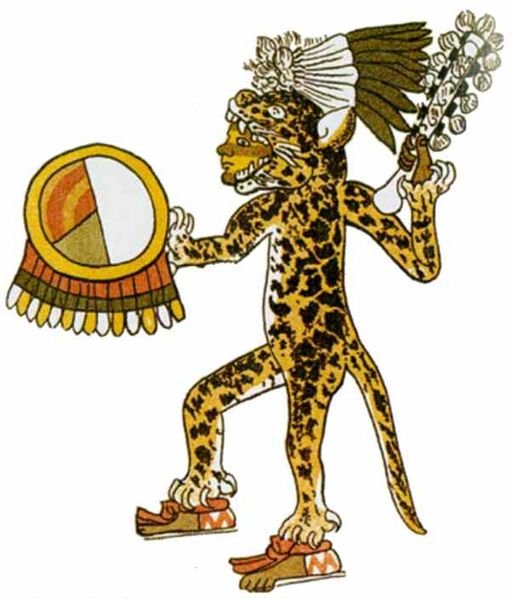|
TAHUA
14. Once again:
"Llew Llaw Gyffes ('the Lion with the Steady Hand'), a type of Dionysus or Celestial Hercules worshipped in ancient Britain, is generally identified wíth Lugh, the Goidelic Sun-god, who has given his name to the towns of Laon, Leyden, Lyons and Carlisle (Caer Lugubalion). The name 'Lugh' may be connected with the Latin lux (light) or lucus (a grove); it may even be derived from the Sumerian lug, meaning 'son' ... ... His death on the first Sunday in August - called Lugh nasadh ('commemoration of Lugh'), later altered to Lugh-mass or Lammas - was until recently observed in Ireland with Good Friday-like mourning and kept as a feast of dead kinsfolk, the mourning procession being always led by a young man carrying a hooped wreath." (Robert Graves: The White Goddess)
The idea of August 1 (213, *123) as the place for Lughnasadh might have been connected with the fact that according to the era of Bharani (*41 precessional days earlier), it could be deduced, 213 - 41 = 172 (*92) was at the "June solstice. From the G text we can also see that 183 days later the northern winter solstice would have been at NOVEMBER 28:
... The correspondence between the winter solstice and the kali'i rite of the Makahiki is arrived at as follows: ideally, the second ceremony of 'breaking the coconut', when the priests assemble at the temple to spot the rising of the Pleiades, coincides with the full moon (Hua tapu) of the twelfth lunar month (Welehu). In the latter eighteenth century, the Pleiades appear at sunset on 18 November. Ten days later (28 November), the Lono effigy sets off on its circuit, which lasts twenty-three days, thus bringing the god back for the climactic battle with the king on 21 December, the solstice (= Hawaiian 16 Makali'i). The correspondence is 'ideal' and only rarely achieved, since it depends on the coincidence of the full moon and the crepuscular rising of the Pleiades .... I.e., half a year (= 366 / 2) after August 1 the Sun should be at μ Aquarii (*316.0)
... ε, 3.4, was Al Bali, the brightest one of the 21st manzil, Al Sa'd al Bula', the Good Fortune of the Swallower, which included μ and ν; these last also known as Al Buläān in the dual. Kazwini said that this strange title came from the fact that the two outside stars were more open than α and β of Capricorn, so that they seemed to swallow, or absorb, the light of the other!
Thumb up (*) came 25 days after ε Aquarii::
... The corresponding sieu, Mo, Mu, Niu, Nü, or Woo Neu, a Woman, anciently written Nok, was composed of these stars with the addition of another, unidentified, ε being the determinant; and the same three were the Euphratean lunar asterism Munaχa, the Goat-fish, and the Coptic Upeuritos, the Discoverer ...'
... It must be admitted, however, that the task of raising the sky was not always a long and arduous one. In the New Hebrides of Melanesia the sky was formerly so low overhead that a woman who was pounding roots in a mortar happened to strike the sky with her pestle. Greatly annoyed at the interruption she looked up and cried angrily, 'Go on up higher!' Whereat the sky meekly obeyed her ...
Evidently we have to include Betelgeuze and Castor in our table for culminations:
Only by 'walking in time-space' can we perceive what anciently could have been very obvious. ... Space and time are a single, related concept in Runasimi [the language of the Inca people], represented by one word, pacha, which can also mean 'world' and 'universe'. The image of time familiar to Waman Puma was static and spatial: one could travel in time as one travels over earth - the structure, the geography, remaining unchanged. To him it does not matter that he shows Inka Wayna Qhapaq, who died in 1525, talking to Spaniards who did not arrive until 1532. Wayna Qhapaq was the last Inca to rule an undivided empire: he is therefore the archetype, and it must be he who asks the Spaniards. 'Do you eat gold?' ...
|
|||||||||||||||||||||||||||||||||||||||||||||||||||||||||||||||||||||||||||||||||||||||||||||||||||||||||||||||||||||||||||||||||||||||||||||||||||||||||||||||||||||||||||||||||||||||||||||||||||||||||














